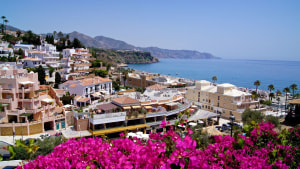Spain’s housing market continues to surge in 2025, with the Costa del Sol and Costa Blanca standing out as the country’s fastest-rising regions. National prices are up 6.7 % year-on-year, but along these Mediterranean coasts, growth has been far stronger, with several towns posting double-digit increases over the past year.As international demand soars and new supply remains limited, Spain’s southern and eastern shores have become the epicentre of the country’s real estate boom.
Costa del Sol: Luxury, Lifestyle, and Limited Supply
From Málaga to Marbella and Estepona, the Costa del Sol continues to attract buyers seeking high-end living in the sun.
Average prices in Marbella climbed nearly 12 % over the past year, while Estepona rose about 9 %. Prime beachfront homes now exceed €6,000 per m², and demand for modern developments remains intense.
Northern Europeans, especially Britons, Scandinavians, and Dutch, dominate the market. From our perspective anything new and well-located sells fast, highlighting the shortage of premium inventory.
Costa Blanca: Value and Rapid Growth
Further north, the Costa Blanca offers affordability and strong momentum. Average prices in Alicante province are up 8 % year-on-year, with hotspots such as Altea and Moraira showing even sharper rises.
Foreign buyers make up around 40 % of transactions in parts of the region — a record for Spain. Improved infrastructure and flight links have strengthened its appeal, and new-build villas with energy-efficient designs are proving especially popular.
Why Prices Keep Rising
- Several factors are fuelling both coasts’ performance:
- Limited supply due to planning constraints and rising construction costs
- High foreign demand from lifestyle and investment buyers
- Improved accessibility via Málaga and Alicante airports
- Strong rental yields in tourist and digital-nomad markets
- Outstanding quality of life, with over 300 days of sunshine per year
Key Challenges
Analysts warn of affordability pressures, rising mortgage costs, and tighter holiday rental rules in popular zones.
Still, most forecasts point to moderate price growth continuing into 2026, especially for new, energy-efficient homes.
How Buyers Can Benefit
Rising prices don’t just mean higher costs, they also signal opportunity.
Here’s how investors and homebuyers can make the most of the changing market:
- Target emerging areas: Look for towns with infrastructure projects, such as Estepona’s new promenade or Torrevieja’s marina upgrades, where value tends to rise fastest.
- Prioritise sustainable new builds: Eco-friendly homes attract buyers and renters alike, and EU incentives are boosting development.
- Balance your portfolio: Combine luxury investments on the Costa del Sol with value options on the Costa Blanca to spread risk and capture both growth and yield.
- Capitalise on rental demand: Holiday and mid-term lets continue to deliver strong returns in both regions.
- Stay ahead of regulation: Keep informed on property and visa reforms, such as possible updates to the Golden Visa, which could affect demand patterns.
The Bottom Line
Spain’s coastal property market is evolving fast, but smart investors can still get ahead.
With rising international demand, modern developments, and limited supply, both the Costa del Sol and Costa Blanca remain top picks for those seeking lifestyle, rental income, or long-term capital growth in 2025.





